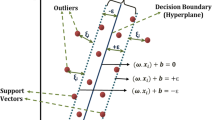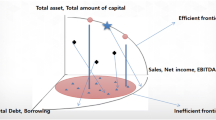Abstract
This study aims to analyze the business performance and technical efficiency of Taiwan’s ICT industry with the Malmquist productivity index of data envelopment analysis. The regression method is used to verify the influence of ICT industry labor input and research input on yield. The tested units include Taiwan companies among the top 250 companies of the ICT industry in the world, as well as companies with great contributions to the ICT industry in Taiwan, for a total of 16 objects. Using the data mining classification method, the usage variables in the financial crisis model are utilized to predict whether the technology of the tested units is efficient. The research results are as follows. First, during the test period, 3, 3 and 6 companies have, respectively, increasing returns, constant returns, and decreasing returns to scale. This suggests that in Taiwan’s ICT industry, only 3 companies can continuously grow to seek the maximum benefit, while 6 are in a period with stable efficiency, and 6 are in a period with declined operating efficiency and increasing costs. Second, labor input has a significant positive correlation with yield, and the influence of labor input on yield is relative to other inputs. The influence of R&D on yield has a positive but insignificant correlation, which is different from previous research. This is because the effect of research input is not relatively obvious, thus requiring to increase the items to be input. Third, by combining two different variables, this study uses the financial crisis precaution model and data envelopment model to predict technical inefficiency before and after the financial tsunami of 2008. No matter whether before or after the financial tsunami of 2008, the financial crisis precaution model is more accurate than the data envelopment model in terms of prediction of technical inefficiency.








Similar content being viewed by others
Explore related subjects
Discover the latest articles, news and stories from top researchers in related subjects.References
Banker RD, Charnes A, Cooper WW (1984) Some models for estimating technical and scale inefficiency in data envelopment analysis. Manag Sci 30(9):1078–1092
Black SE, Lynch LM (2001) How to compete: the impact of workplace practices and information technology on productivity. Rev Econ Stat 83(3):434–445
Charnes A, Cooper WW, Rhodes E (1978) Measuring the efficiency of decision making units. Eur J Oper Res 2(6):429–444
Chen FH, Howard H (2015) An alternative model for the analysis of detecting electronic industries earnings management using stepwise regression, random forest, and decision tree. Soft Comput. doi:10.1007/s00500-015-1616-6
Chen MS, Han J, Yu PS (1996) Data mining: an overview from a database perspective. IEEE Trans Knowl Data Eng 8(6):866–882
Creti A (2002) Network technologies, communication externalities and total factor productivity. Struct Change Econ Dyn 12(1):1–28
Färe R, Grosskopf S, Norris M, Zhang Z (1994) Productivity growth. Technical progress, and efficiency change in industrialized countries. Am Econ Rev 84(1):66–83
Farell MJ (1957) The measurement of productive efficiency. J R Stat Soc Ser A Part III:253–290
Han J, Kamber M, Pei J (2011) Data mining: concepts and techniques, 3rd edn. Morgan Kaufmann Publishers, San Francisco
Isazadeh A, Mahan F, Pedrycz W (2015) MFlexDT: multi flexible fuzzy decision tree for data stream classification. Soft Comput. doi:10.1007/s00500-015-1733-2
Lin JC, Leu FY, Chen YP (2015) Analyzing job completion reliability and job energy consumption for a heterogeneous mapreduce cluster under different intermediate-data replication policies. J Supercomput 71(5):1657–1677
Lin JC, Leu FY, Chen YP (2015) Impact of mapreduce policies on job completion reliability and job energy consumption. IEEE Trans Parallel Distrib Syst 26(5):1364–1378
Linoff GS, Berry MJA (2011) Data mining techniques: for marketing, sales, and customer support. Wiley Computer, New York
Liu B, Shen Y, Chen X, Chen Y, Wang X (2014) A partial binary tree DEA-DA cyclic classification model for decision makers in complex multi-attribute large-group interval-valued intuitionistic fuzzy decision-making problems. Inf Fusion 18:119–130
Mirabella N, Rigamonti L, Scalbi S (2013) Life cycle assessment of Information and Communication Technology application: a case study of dematerialization in the Italian Public Administration. J Clean Prod 44:115–122
Ogiela L, Ogiela MR (2011) In: Kim TH et al (eds) Semantic analysis processes in advanced pattern understanding systems. Springer, Berlin. AST 2011, CCIS 195, pp 26–30
Ogiela L, Ogiela MR (2014) Cognitive systems for intelligent business information management in cognitive economy. Int J Inf Manag 34(6):751–760
Pan WT, Su SC, Lin CP, Hu MS, Lei LL (2015) Establishment of the optimized production performance detection model with the combination of GA and BPN. Intell Autom Soft Comput 21(1):97–106
Quinlan JR (1993) C4.5: programs for machine learning. Morgan Kaufmann Publishers, Burlington
Schoen C, Osborn R, Squires D, Doty M, Rasmussen P, Pierson R, Applebaum S (2012) A survey of primary care doctors in ten countries shows progress in use of health information technology. In: Less in other areas, health aff, pp 2805–2816
Shachaf P (2008) Cultural diversity and information and communication technology impacts on global virtual teams: an exploratory study. Inf Manag 45(2):131–142
Shafer JC, Agrawal R, Mehta M (1996) SPRINT: a scalable parallel classifier for data mining. In: Proceedings of the 22th international conference on very large data bases, pp 544–555
Shi L, Wu G (2014) Empirical research on logistics enterprises efficiency based on DEA. In: Eastern academic forum, pp 301–306
Wang EH (1999) ICT and economic development in Taiwan: analysis of the evidence. Telecommun Policy 23:235–243
Yan JY, Liao JJ (2014) Incorporated intangible assets with a multiple-agent decision tree for financial crisis prediction. In: 11th international conference on service systems and service management (ICSSSM), pp 1–4
Author information
Authors and Affiliations
Corresponding author
Ethics declarations
Conflict of interest
The authors declare that they have no conflict of interest.
Additional information
Communicated by V. Loia.
Rights and permissions
About this article
Cite this article
Chiang, TC., Cheng, PY. & Leu, FY. Prediction of technical efficiency and financial crisis of Taiwan’s information and communication technology industry with decision tree and DEA. Soft Comput 21, 5341–5353 (2017). https://doi.org/10.1007/s00500-016-2117-y
Published:
Issue Date:
DOI: https://doi.org/10.1007/s00500-016-2117-y




